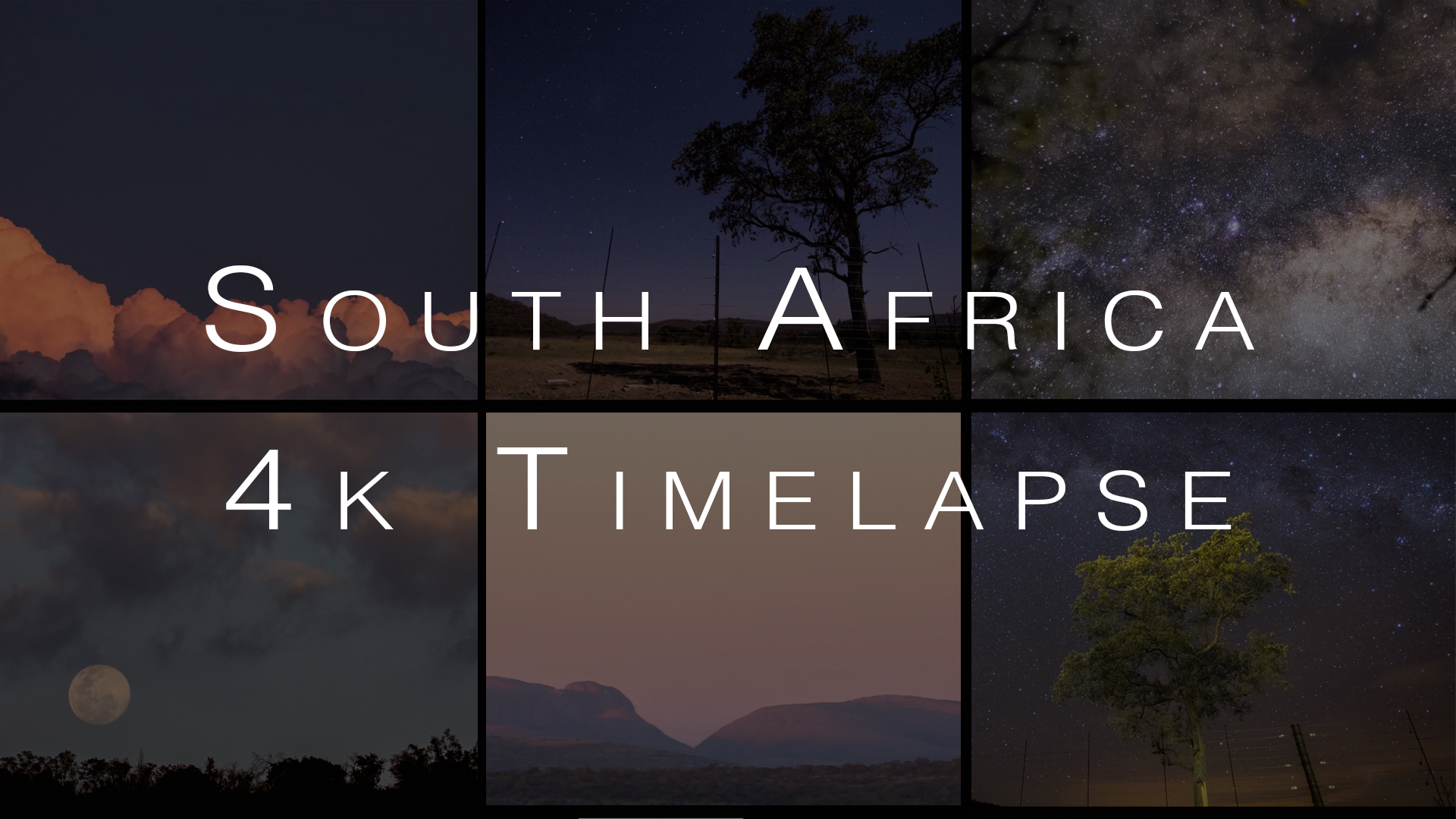During the summer, I spent 6 weeks on a South African reserve collecting data for my dissertation. While I was there I took over 4,000 images for a timelapse video.
South Africa Timelapse | “Thanks, Benni”
Six days into the trip my camera had a ‘falling-off-tripod-accident’ and was sent to camera hospital. Luckily, while my camera was getting fixed for five weeks, one of the other students and good friend of mine, Benni, let me use his camera in the evenings. His camera’s shutter opened and closed a couple of thousand times for this timelapse and for that I’ll always be grateful. So “Thanks, Benni”.
Some of the sequences in the timelapse have pretty interesting stories behind them but if I was to explain each one in detail this article would rival my dissertation in length. So instead I am going to give the background story behind just three of the sequences.
Third time lucky
This is one of my favourite sequences in the timelapse.

The sequence was taken over eight hours and is made up of 500 images, with each image being a 20 second exposure. We took our sleeping bags outside and slept by the camera at the edge of the fence. The moon was basically full and over the eight hours it rises from the right of the image, goes over our heads and begins to set in the left of the image. You can see the shadow cast by the moon drifting across the scene. The stars look as though they are rotating (around the south pole) but in reality what we are seeing is the earth spinning on its own axis, as the stars are relatively stationary compared to us.
It took three attempts to get this sequence just right. That’s three nights of staying up for as long as the camera was taking pictures. On the first night the camera battery, despite being full when we started, ran out of juice after about 4 hours. It was very, very cold at nights when we were there, with temperatures just above freezing, so this certainly didn’t help with the battery life! Although four hours of footage looked great, even an hour or two extra would have been great. So I tried it again the next night but this time I put the camera into a low energy mode to make the battery last for as long as possible.
The second night the battery lasted much longer but when I went to look at the sequence the next morning the last 200 images were a fraction out of focus. I must have nudged the focus ring on the lens a tiny bit when I went to check on the battery life during the night. So on our third and final attempt I made sure the camera was in low energy mode and I taped the focus ring down so that it was stuck ‘in focus’.
Those three nights we stayed were unforgettable. We saw dozens of shooting stars, we heard jackals howling and we even heard a leopard roaring as it patrolled the plains just on the other side of the fence.

Storm clouds
A couple of the sequences show storm clouds at sunset. These images were shot on my 70-300mm lens at about a frame per second.

We rarely ever saw clouds during our six week stay on the reserve. One night though, we were woken by a low rumbling of thunder. The air was surprisingly warm even though it was about one in the morning and I had to get out of my sleeping bag I got so hot. Soon the wind was howling and hail stones the size of golf balls were crashing down on our canvas tents. Great flashes of lightening illuminated the tent every five seconds as the light poured in through the zips. The storm was directly above us for about twenty minutes. Throughout the next day the hail stones turned to light rain and thunder could only be heard in the distance. As the sun was setting the next evening, the sky started to clear and I got these sequences of the storm clouds painted by the evening sun.
Rendezvous
Our camp was enclosed inside a fence in the middle of a plain. At sunrise and sunset this plain was full of life. We could unzip our tents and look out to see things like elephants, rhino, impala, warthogs and jackals as they went about their business just on the other side of the fence. It was a safari from the comfort of our own sleeping bags. Two of the sequences show some of the animal life on the plain.

This frame has warthog and baboons foraging around termite mounds and a waterbuck male wanders of into the distance behind them. It was an incredible experience witnessing these animals in the wild. It was also a nice change that it was us who were on the inside of the fence instead of the animals.
Music
My good friend, Ros Lynch, wrote the music for this timelapse after he had seen the original footage. I love the African bongos and the singing (which is in reverse) that he put in. Really cool vibe that perfectly fits this timelapse. You can check out more of his stuff here.
